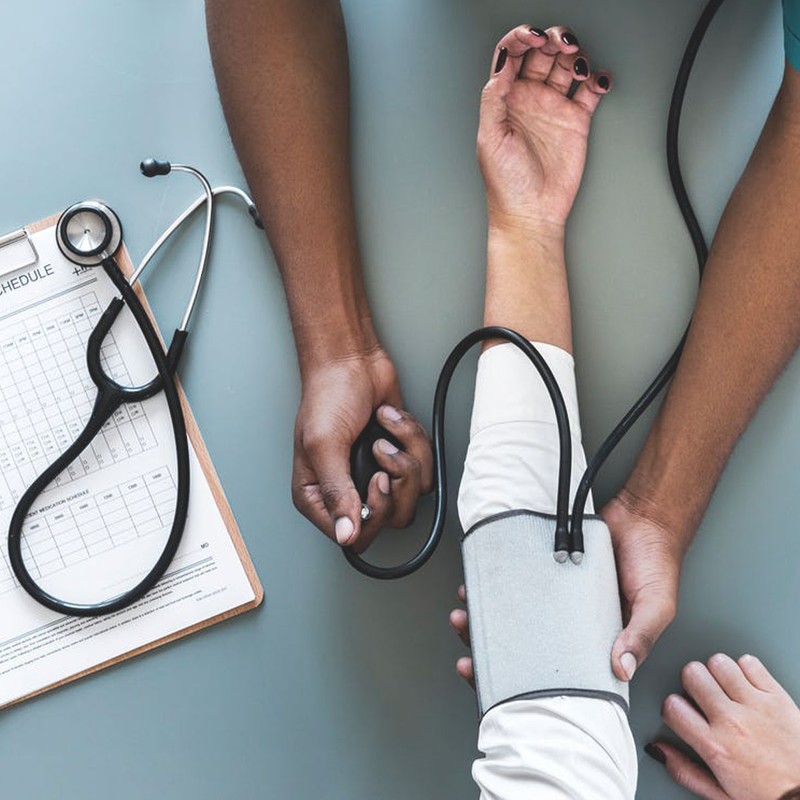12 Things You Need To Know About Diabetes Type 2
Back-to-basics, what is the difference between type 1 and 2 diabetes?
Both share one problem: high levels of blood sugar. The difference though, is type 1 is an autoimmune disease where the body’s system attacks the cells in the pancreas that make insulin. While the direct cause remains unknown, genetic and environmental factors are said to play a part. Type 2 however, is instead linked to lifestyle factors like obesity, inactivity and a poor diet.
Is pre-diabetes really a thing?
It is a condition that is estimated, but not confirmed, to affect about one in three adults in the UK. Put simply, it’s where your blood sugar (glucose) levels are higher than they should be, but not quite yet in the diabetic range. Symptoms are incredibly rare for this though, so without a blood test, you’ll be none the wiser.
Why has there been such a sudden rise in diabetes type 2?
Part of the reason we’ve seen a spike is because of the huge increase in under 35s getting screened for diabetes. This is said to be down to the younger and millennial generation becoming more aware and in tune with their health, wanting to combat any problems stat. Having said that, it’s also due to lazy office culture, snacking, processed food and fizzy drinks – all of which are big common culprits.
What are the key symptoms to look out for?
Symptoms for type 2 are much less obvious than type 1 and can often go unnoticed for a very long time for both men and women. But as a general guide, there are six key symptoms you should look out for:
- Increased thirst
- Passing water more often, especially at night
- Extreme tiredness
- Blurred vision
- Slow healing wounds
- General itching and regular instances of thrush
If not diagnosed soon enough, what damage can be done to the body?
People with the condition can be at greater risk of developing problems with their vision and also kidney disease. There’s also evidence to suggest that if you have diabetes type 2, your chances of having a heart attack, stroke or developing dementia are roughly doubled. Scary stuff. So, if you experience any of the above symptoms, make sure you seek medical advice as soon as possible.
But on a positive, is it true you can now cure diabetes type 2?
The good news is yes. While many were once sceptical, there is now research to prove that type 2 diabetes can be reversed with the help of a rapid weight-loss diet. It will vary from person to person, but statistics show that dramatically switching up an unhealthy lifestyle will improve the insulin sensitivity that those with type 2 experience.
Finally, are there any ways of minimising your risk?
There are several easy things you can start doing daily. We caught up with Lloyds Pharmacy Pharmacist, Anshu Bhimbat for five lifestyle changes that may delay the progression of diabetes:
1. Cut Down On Carbs
“A low carbohydrate diet is highly recommended for people living with type 2 diabetes. It will lower the amount of insulin that the body needs to produce. Cutting down on carbohydrates alongside other healthy lifestyle and dietary changes, can reduce blood sugar levels into a non-diabetic range.”
2. Book An Eye Check
“Annual eye checks are vital due to the risk of diabetic retinopathy, a complication that occurs due to high blood sugar levels damaging the back of the eye. At the early stages symptoms can go unnoticed but can be picked up in photographs taken in the NHS diabetic eye screening programme.”
3.Up Your Fitness
“Physical exercise can help maintain a healthy weight, improving the condition of your heart and lowering your blood pressure. It helps to control blood glucose levels too, as when exercising, your muscles can use glucose, even without insulin. Regular exercise may be difficult to fit into your daily routine; however, you could make a start with 10 minutes a day, gradually increasing it over time.”
4. Manage A Balanced Diet
“It’s important to remember that not everyone with type 2 diabetes or at risk of developing it is overweight. However, following a balanced diet will help those who have a high BMI lose weight which can help reverse type 2 diabetes. A balanced diet should include plenty of vegetables and fibre foods whilst avoiding high saturated fats. Having diabetes shouldn’t mean that you must follow a sugar-free diet either. Small, irregular treats in moderation won’t affect your health or diabetes management in the long term.”
5. Look After Yourself
“If you are worried about your risk of developing type 2, Lloyds Pharmacy have now teamed up with Leicester Diabetes Centre to develop a 12-week Risk Reduction Guide which people can follow to help reduce their risks. From simple swaps you can make, to exercises to try, there are lots of things in there to help guide you. You can check it out here.”
For more information on Type 2 Diabetes visit NHS.uk
DISCLAIMER: We endeavour to always credit the correct original source of every image we use. If you think a credit may be incorrect, please contact us at info@sheerluxe.com.






